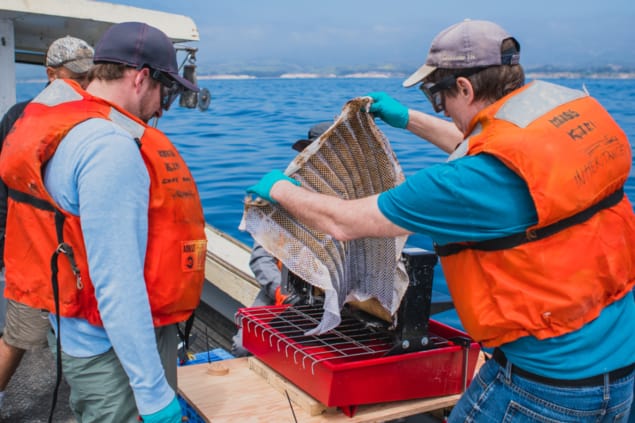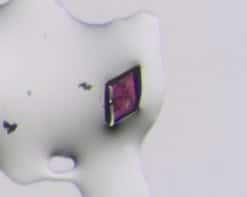
An easy-to-manufacture sponge-like material, made from a household material, has been shown to effectively clean up oil spills on ocean surfaces. Researchers at the Argonne National Laboratory in the US have used the material, dubbed the “Oleo Sponge”, to completely remove a naturally-occurring sheen of oil, and they now hope to commercialize the technology on a worldwide scale.
Oil spills are a notorious environmental and economic issue, typically leaving a micron-thick sheen of oil on the surface of the water. Previous methods to remove this sheen have included skimming it away using floats, burning it, and collecting oil particles with chemical-based thickening agents. But these methods are largely impractical, since the layer of oil is too thin to be completely removed, and some of the approaches introduce environmental hazards of their own. “Despite the industry’s best intentions, oil spills continue to happen, and existing clean-up methods are surprisingly inadequate,” says Argonne researcher Seth Darling.
The Argonne team set out to find a clean-up technique that is both effective and environmentally friendly, and they explored how polyurethane foam – a material commonly used in padded furniture – could provide a possible starting point. As well as its large interior surface area, polyurethane has the right combination of mechanical properties to enable it to absorb large amounts of oil.
To improve its absorbent properties further, the team used a newly-developed technique called sequential infiltration synthesis – which infuses polymers with inorganic materials through repeated exposure to gaseous precursor molecules. The researchers used the technique to grow a thin layer of metal-oxide primer on the foam’s interior surface. This sponge-like material readily binds to the organic molecules in oil, which should make it a practical and non-invasive solution for capturing oil sheens.
The Argonne researchers tested the material on a naturally-occurring sheen of organic molecules off the coast of southern California. After deploying a two-foot-square Oleo Sponge onto the sheen, emulating an emergency clean-up, the team could see no visible trace of oil on the surface of the water. After the experiment, the sponge was simply wrung out ready for repeated use, while the oil it contained could be disposed of safely.
The Argonne team has already produced Oleo Sponge in small quantities, but they now hope to scale the technology and manufacture much larger quantities for a worldwide market. “This technology has so many applications,” says Darling. “We are excited about the opportunities for other environmental remediation applications and beyond, which makes us that much more motivated to keep working on it.”



